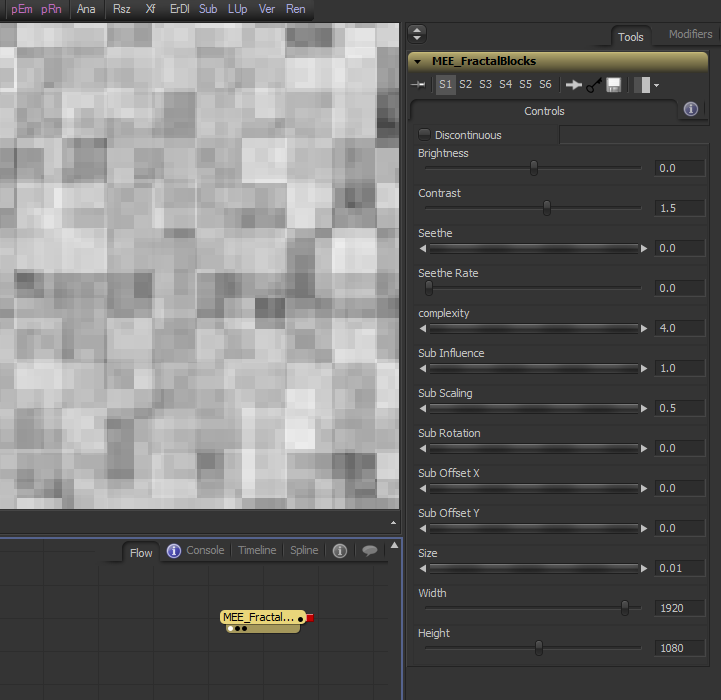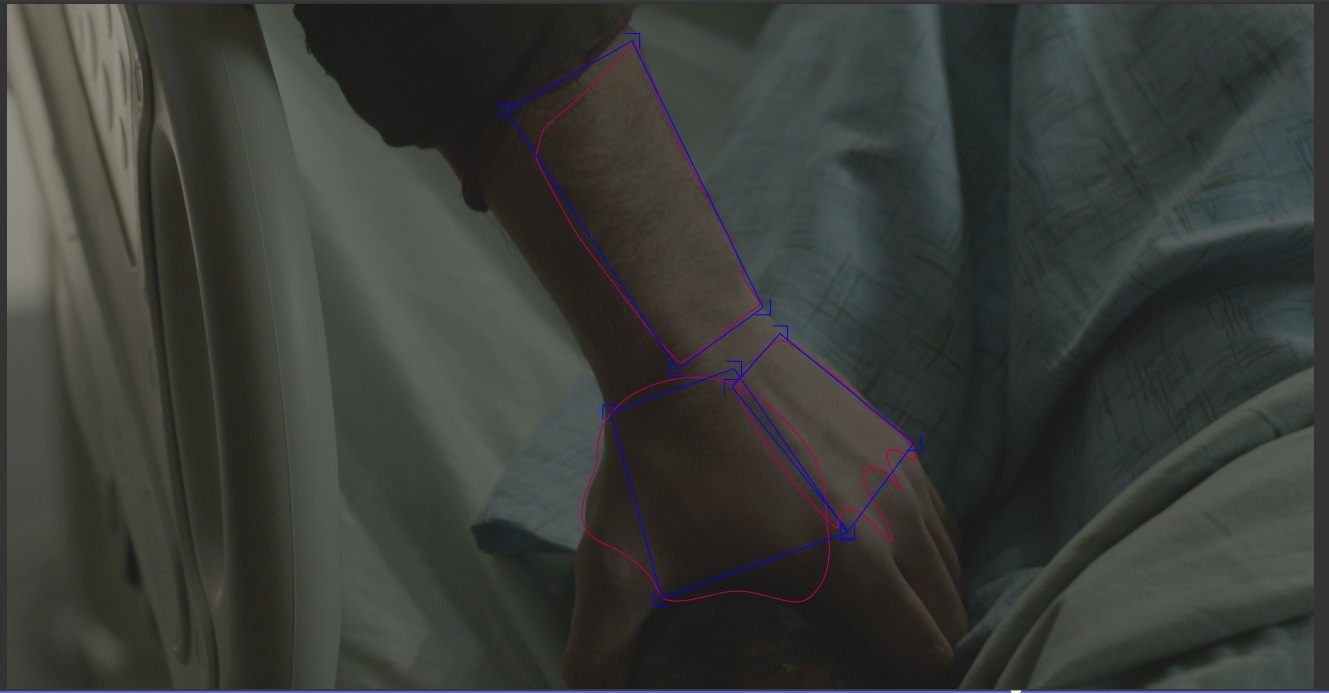Four years ago, I published a series of articles on job titles in the visual effects industry. I missed an entire class of people, though: The support personnel that keep all the gears oiled and the data flowing.Continue reading →
Fractal Blocks for Blackmagic Fusion
Update: Version 2.0 of FractalBlocks is much faster, has better handling for out-of-range values, and features improved controls. Also, this tool can be found in Reactor, Fusion's free, community-built package manager.
After Effects has a very useful setting in its Fractal Noise effect that turns its output into blocks. Here is a macro that replicates most of that feature in Fusion.
It's a bit slow, and there are a couple of issues that I'll eventually iron out, as well as a couple more controls I'd like to add, but in its current form it solves the problems I wanted to solve.
MT stands for MuseTools, a collection of tools and elements created by and for Muse VFX.
Blackmagic Fusion: The Texture Node
While I was studying visual effects in college, one of my instructors ran us through an exercise where we recreated a simple chroma-key tool using basic nodes in Shake. The result was no more functional than just using a Chroma Key node, but by understanding what goes on inside the tool, we gained a better understanding of how to use it and, probably more importantly, when not to use it. Unfortunately, I did not really appreciate the lesson at the time, and I do not recall the structure of that custom tool. Years later, however, I have come to realize that I can greatly expand my capabilities by reverse-engineering some of my compositing software's tools and applying what I learn to make new ones.
Long story short: I spent a little time this week deconstructing the Texture tool in Blackmagic Fusion and building a new one using the CustomTool. It turns out that the node is ridiculously simple, but it takes a bit of mental gymnastics to understand what's going on. Or at least, it did for me. So let's get into it.Continue reading →
Freelance Rate calculator
In a conversation on LinkedIn, I promised to make this file available. I don't recall who it originally came from, but I think I found it on CGTalk. This rate calculator for freelance CG artists is in Microsoft Excel format, but there is nothing complex in it, so it opens just fine in OpenOffice, and probably in Google Docs as well.
Planar Tracking of Organic Shapes
An acquaintance recently quizzed me about whether planar tracking could be used for flexible, organic subjects. The short answer is "yes, I do it all the time," but I thought a little case study might help to clarify the matter.
Here is a frame from an upcoming episode of Teen Wolf, with some mocha shapes indicated:
Kinunir Class Battlecruiser redesigned
My Traveller group is making the transition to the new Traveller 5 rules. Or some of them, at any rate. Using the new ship design rules, I recreated the Kinunir class battlecruiser described in Adventure 1. The existing deckplan didn't even follow the design rules set forth by Classic Traveller, so I threw it out the window, redesigned the ship entirely, and created a new more reasonable deckplan.Continue reading →
FumeFX stair-step artifacts
I've had the pleasure of learning some FumeFX* at Eden. Recently I had a scene that gave me some odd artifacts that I couldn't solve. My excellent coworker, Stefan Brederick, spent some time with it and came up with a solution. First, an illustration of the problem:

On the rendering tab, in the Rendering Parameters is a Step Size % setting. By default, this is at 50, and according to the documentation, lowering the value should result in a higher-quality render. In this case, though, for unknown reasons, raising the number improved the result. A comparison render:

I haven't yet figured out exactly why this is happening in this particular scene but not in the others that I've made.
*FumeFX is a plug-in for Autodesk 3DS Max that simulates smoke, fire, and other gaseous fluid effects. I am currently using it to create clouds.
Hoffer's Wake

This is the Hoffer's Wake star system from the PC Game Independence War 2: Edge of Chaos. It's in a style similar to the in game navigation system.
Job titles in VFX and CG: 3d Artists
Stereo "3d" movies have made terminology a bit confusing recently. When I refer to 3d, I mean the virtual 3-dimensional Cartesian system that exists inside the computer. 3d artists create objects that exist in that space and can be looked at from any angle (within the software, of course). When I use the term stereo, I am referring to what viewers often call a "3d movie." It gives the illusion of three dimensions by tricking the viewer's eye into believing that objects on the screen are at different depths. That's not really 3d, though, since no matter where you stand in the theater, you're going to see the same image. That is, you can't get a different perspective, even though it feels like you should be able to. So, vocabulary lesson aside, I give you:Continue reading →
Job titles in VFX and CG: 2d Effects Artists
When you're dealing with CG, there are two "art environments," so to speak. There is the 3d world in which objects are modeled and animated, and there is the 2d world of the screen. Things are getting a little blurry in that regard, what with stereoscopy becoming more prevalent and 3d functions becoming available in the compositing software, but it's still a somewhat useful division with regards to categorizing artists.Continue reading →

